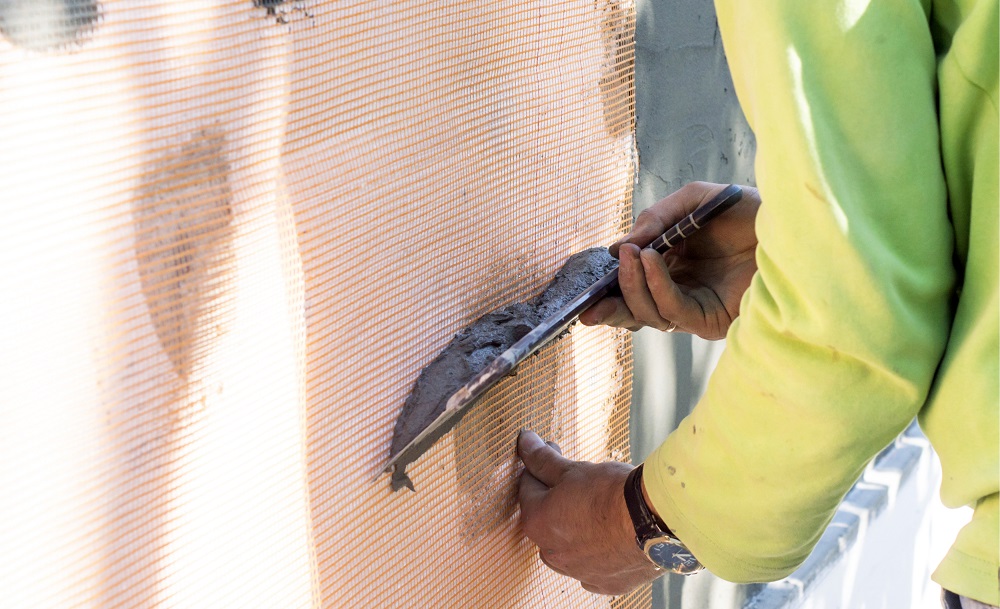Extended polystyrene or Styrofoam is lightweight product and constitutes of expanded polystyrene beads. The expanded polystyrene and extruded polystyrene are the two distinct kinds of foams that can be used for the construction method. EPS or expanded polystyrene offers a fabulous thermal performance but features only a limited structural strength or impact resistance. Polystyrene foam render is the kind of rendering where polymer render is used in the mix. The cement base has silicone water repellant and so the mix is water resistant and it also allows the water inside to pass through the layers of the wall. This makes the walls breathable. Polymer render can be availed as monocoque rendering which helps to avoid the base coat. But, it still offers a very strong base for finish coats. The polystyrene rendering is mainly used on breeze blocks or lightweight blocks.
Polystyrene Rendering is a Flexible Choice
Polystyrene render has become a popular choice and most home owners are seeing the practical value. Indeed, rendering has evolved a lot from cement rendering and so now we have the polystyrene foam render. It is available in a wide variety of colors and there are various finishes. For a more appealing look, you can also opt for texture finished. The pre-blended polystyrene is flexible and the render quality is also much consistent and superior. Again, it is suitable for almost all kinds of surfaces including steel frame building, bricks, and polystyrene sheets.
Polystyrene Foam Rendering has an Excellent Insulating Property
Polystyrene foam, popularly called expanded polystyrene, is the kind of render infused with the foaming agent. This entire process of making expanded polystyrene gives excellent insulating characteristics to the material. Styrofoam is resistant to heat and there are better moisture capabilities. So, if you are looking for a substrate for wall insulation which is cost effective, you may choose EPS. Apart from the insulating characteristics and economical rates, there are various other benefits of EPS. The substrate is lightweight, long lasting, much easier to install, rot proof, flood proof and extremely durable. It is also an eco-friendly option.
Why Should You Consider the Cladding of Polystyrene Foam?
When compared to fired bricks and traditional concrete blocks, it is better to choose the EPS panel cladding. Polystyrene foam panels are now a popular choice as these tend to reduce the temperature impact by blocking the heat. Such panels are an excellent choice because these provide a good comfort level during summer and winter as well. So, they are much better than the double bricks. Some of the other advantages are longevity, lightweight characteristics. They are a low-cost option also.
Rendered Foams Walls and The Construction

Polystyrene foam renders walls are becoming more common as these provide more support to the heavy brick walls. Indeed, they may be used for an upper story to offer support to the walls. The construction is pretty easier here since the manufactured foam boards are fixed to the frames with the help of galvanized screws incorporating spreader washers. Here the joints are sealed with the help of polyurethane foam and with mesh joint tape. Metallic strips are employed to reinforce the external corners. The professional applies 5mm acrylic render to the three-layer system. Being similar to the plastic material, polystyrene foam comprises of tiny balls.
The Chief Benefit of Using Polystyrene for Building and Construction
Polystyrene is inert in nature and so it does not result in chemical reactions. The material option is such that it does not attract the pests even. So, it is a popular choice in the construction industry.
From the above features and benefits, it is clear that polystyrene is a suitable choice of rendering material. You must always summon a specialist for the rendering job.
















